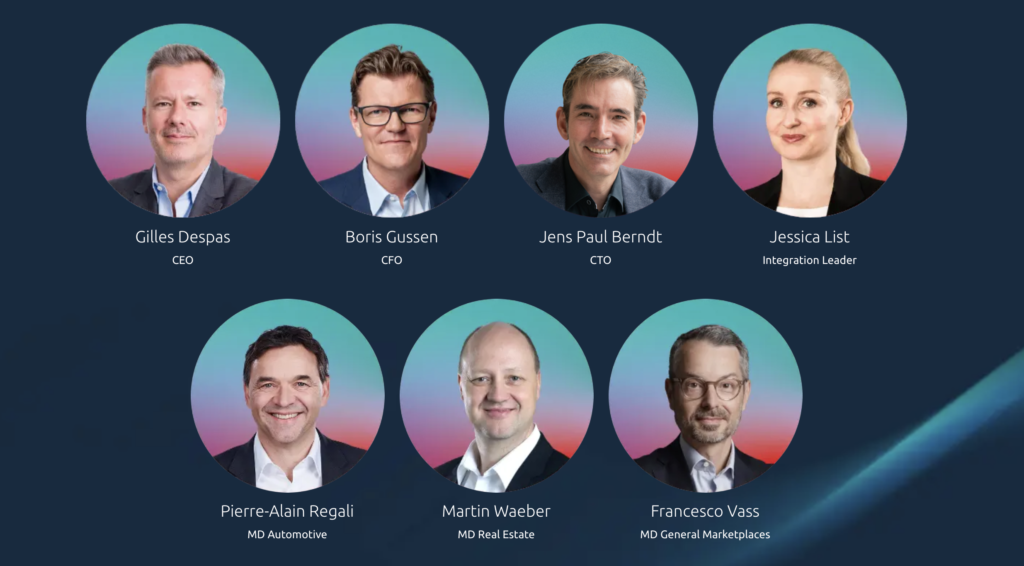Cybercrime in Switzerland once again sky-rocketed in 2024 – as shown by the latest figures from the Federal Statistical Office, published on 24 March 2025. The SMG Swiss Marketplace Group is countering this risk by making consistent investments in digital security. Millions of dollars are already being spent on technical protective measures, preventative work and user education each year, but these efforts will be ramped up even further in 2025.
Cybercrime poses a growing risk in Switzerland. The latest figures from the Federal Statistical Office (FSO) show that 59,034 crimes involving digital offences were recorded in 2024, more than double the number in 2020. Cybercrime, including hacking, fraud on classified ad platforms and phishing – risks that online platforms are inherently exposed to – accounts for over 90% of this.
The SMG Swiss Marketplace Group is responding to this trend with a clear sense of responsibility. Each year, it invests millions in state-of-the-art security technology, preventative work and user education.
Integrated security architecture on several levels
SMG relies on a forward-looking security strategy that incorporates technology, prevention and collaboration with authorities and specialist alliances:
- Digital ID & login: introduction of passwordless logins and adaptive multi-factor authentication (MFA) on multiple platforms. Ricardo is a European pioneer with its “smart push MFA”.
- Risk-based approach to security: decisions are made with reference to rule-based, increasingly AI-driven assessments of contextual security, depending on the action and user behaviour.
- Cross-platform collaboration: insights and security solutions are used across platforms for maximum protection across the entire network.
- Verification via Know-Your-Customer (KYC): semi-automated identity verification; now fully autonomous on general marketplaces.
- Close collaboration with law enforcement authorities: including an automated portal that considerably speeds up communication with authorities.
- Commitment to standards: memberships of digitalswitzerland and the FIDO Alliance underscore the commitment to digital security on a national and international level.
Phishing and prevention: raising awareness is key
Phishing remains a popular gateway for fraudsters and often takes place via deceptively authentic websites, such as fake parcel services or payment portals. According to the FSO, the number of such attacks increased by 56.2% in 2024. In fact, the platform antiphishing.ch recorded over 975,000 suspected reports, resulting in the identification of 20,872 phishing websites (+108% compared to the previous year). Swiss brand names, including Ricardo, were used fraudulently in around two thirds of the cases.
SMG has its own advanced process to quickly remove fraudulent websites. However, there is no way, on a technical level, to fully prevent phishing attacks. SMG therefore focuses on educating users in a targeted manner – with campaigns, platform notices, FAQs, social media, newsletters and blog posts. In addition, the SMG has partnered with Swiss Crime Prevention (SCP) to conduct national awareness campaigns to raise awareness of the risks of classified ad fraud.
SMG also promotes awareness of security amongst its employees: an open security culture is being established thanks to the annual Cybersecurity Month, ongoing internal training and a bug bounty program that also rewards external tip-offs.
Ricardo MoneyGuard: maximum security for second-hand purchases
Ricardo has been offering an additional optional security feature in the form of MoneyGuard since 2024. This makes private online transactions even more secure and trustworthy, promoting the sustainable trade in second-hand products. MoneyGuard protects buyers and sellers alike: payments are made before dispatch, but are only released once the receipt and quality of the goods have been confirmed – offering protection against fraud such as non-delivery, non-payment or significantly inaccurate product descriptions. Thanks to all the security measures deployed, including MoneyGuard, the fraud rate at Ricardo was reduced to less than 0.3% of all transactions in 2024.
Digital security remains the focus
The risks within the digital sphere will remain dynamic in the future. The actual number of cyber fraud cases is also likely to be well above the figures reported to the FSO. Digital security is therefore an ongoing task and a top priority for SMG. Protective mechanisms will continue to be honed and rolled out across platforms, while further investments will be made in raising awareness amongst users and employees.

Roswitha Brunner
Head Corporate Communication & Public Affairs

